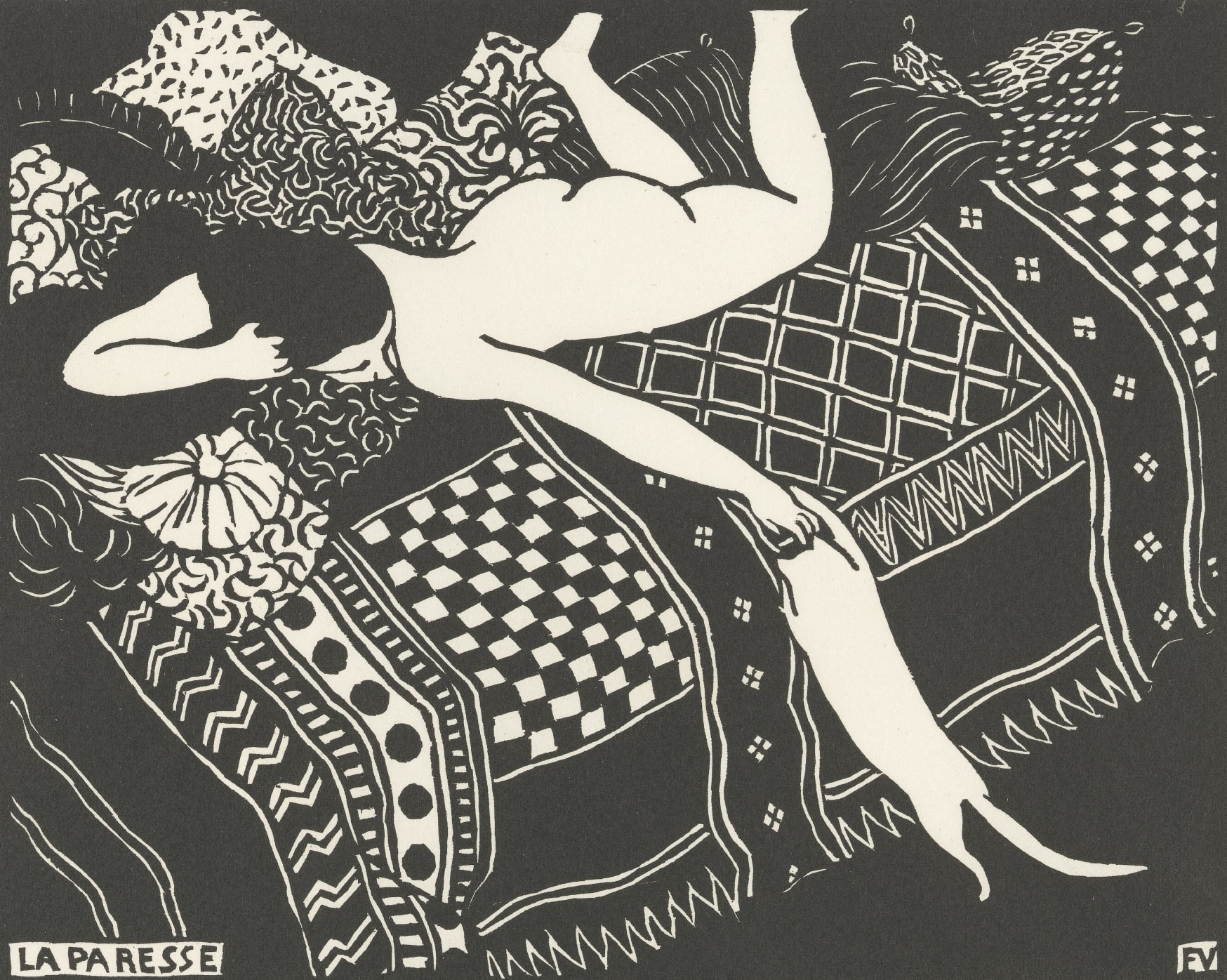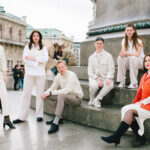During the last decades artwork was acquired by the Van Gogh Museum Amsterdam and are now featured at the latest exhibition “Here to Stay”. To get a short insight into the exhibition, the museum is showing a selection of the most important works and stories online.
About the exhibition Here to Stay
The exhibition shows the full extent of the most remarkable and notable works of art which the museum acquired over the past 10 years. Paintings, drawings, prints, sculptures and letters are exhibited. A large part of the artworks shown in “Here to Stay” are not by Van Gogh himself, but from his contemporaries, who inspired him and his works.
Known artists such as Edvard Munch, Henri de Toulouse–Lautrec, Claude Monet and Edgar Degas, but also lesser-known artists such as Henri Guérard and Adolphe Appian, are represented in the exhibition.
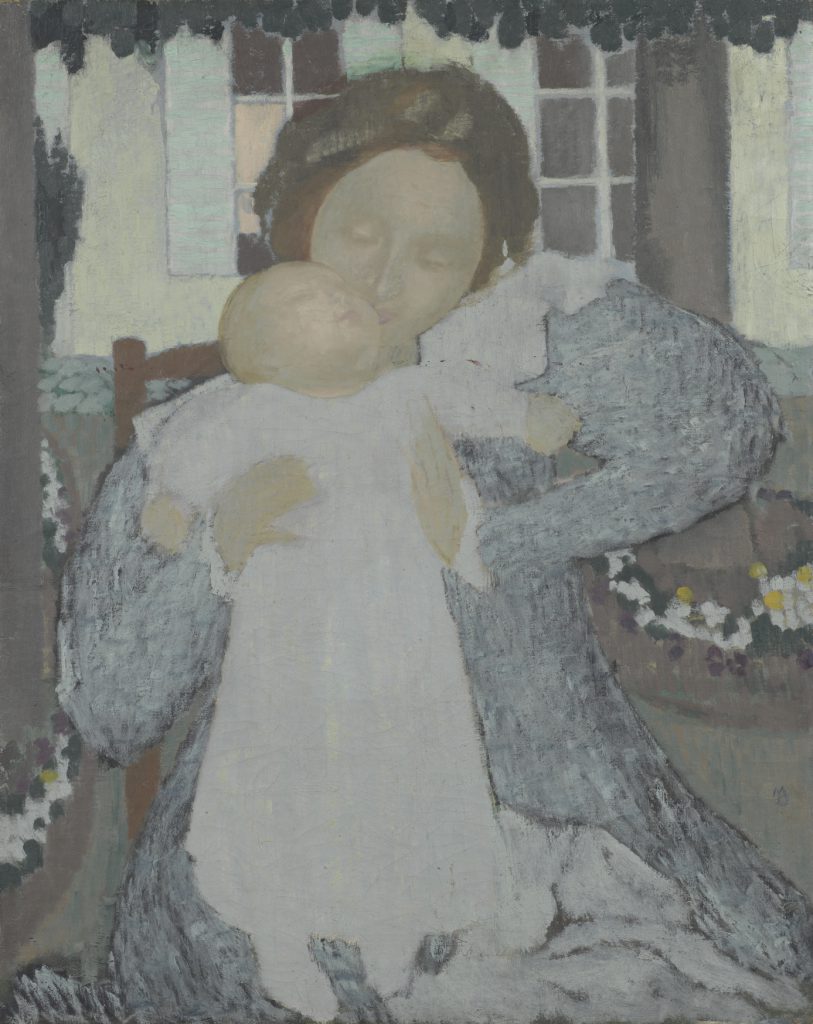
Maurice Denis, ‘Motherhood (Vierge au baiser)’,
1896-1897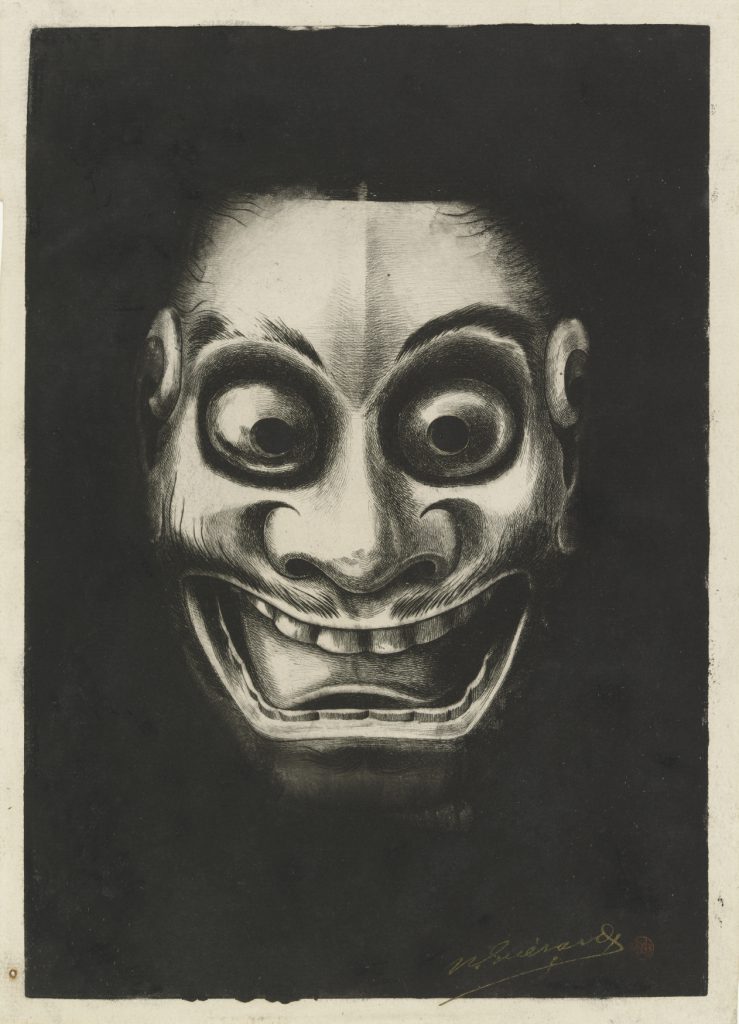
Henri Charles Guérard, ‘Antique Theatre Mask from Lacquered Wood’, 1882
The stories of people outside the museum also accompany the works of art in this exhibition. Especially for “Here to Stay”, collectors, museum fans and 10 Amsterdam residents were invited to reveal their favorite acquisitions of the past decade.
A different perspective
“Here to Stay-online” offers visitors an series of selected artwork of the original exhibition. At home visitors can deal with the work of art face-to-face online. The museum wanted the virtual visitors to “walk” trough the online exhibition, just like at an actual museum visit.
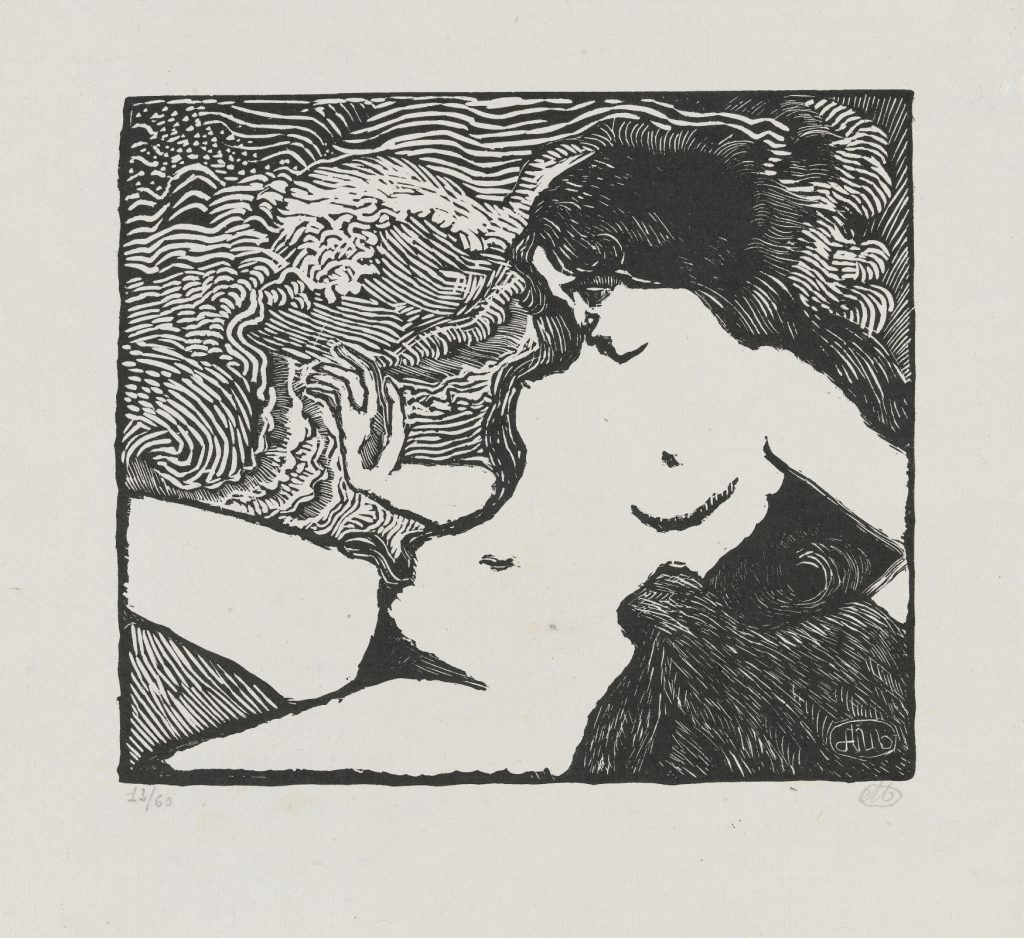
Aristide Maillol, ‘The Wave (La vague)’, 1895 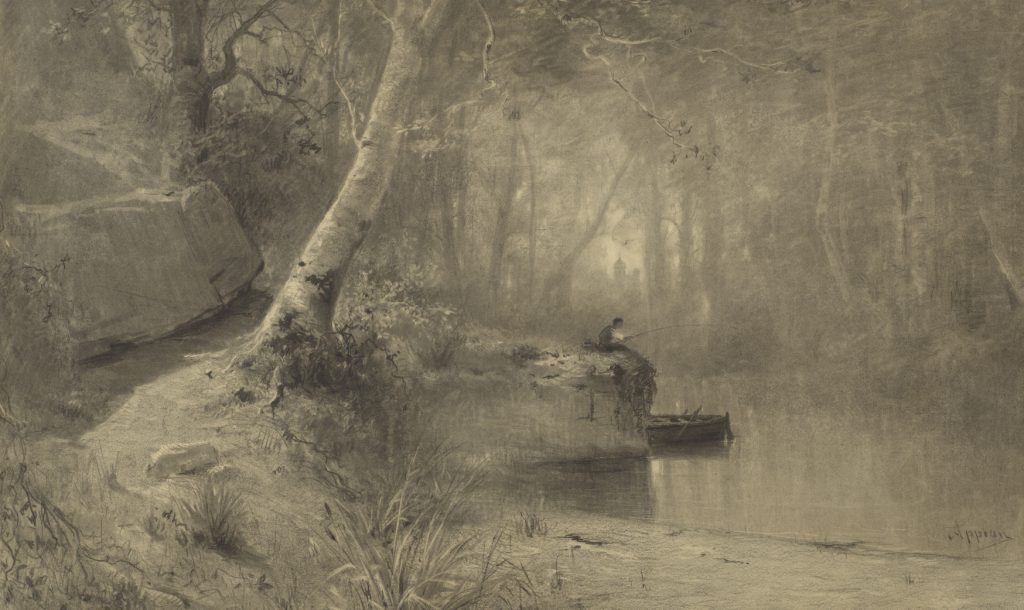
Adolphe Appian, ‘Fisherman along a Riverbank’, 1867
The various perspectives plays an important role in this exhibition. For example, when viewing Félix Vallotton’s print series Intimités (1897-1898), visitors can read the story and the perspective on this artwork of curator Fleur, who describes the work as a ‘ten-round boxing match between the sexes’.
By presenting the stories of the curators, visitors are offered different perspectives at the shown artworks. They explain why a museum collects works and introduce their personal perspective on the artworks. It’s like an online lecture given by the museums art experts.
Félix Vallotton, The Solid Reason, 1897-1898
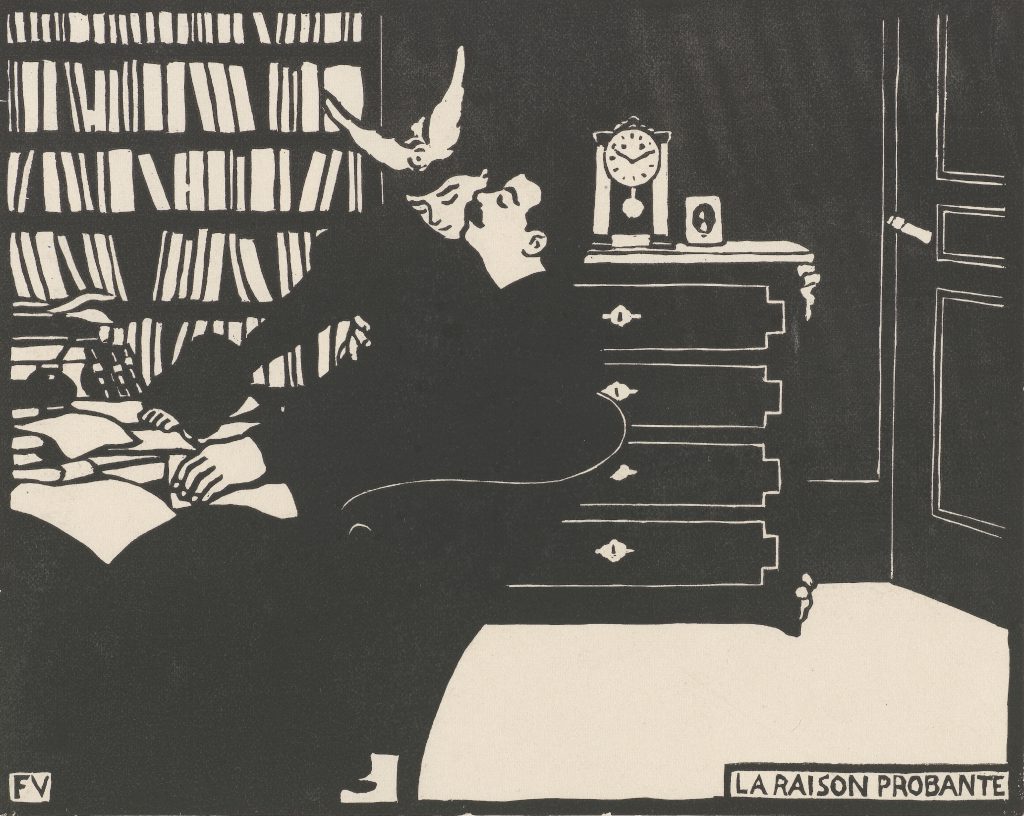
Félix Vallotton, The Solid Reason (La raison probante) from the series Intimités, 1897-1898
“‘I just can’t get enough of this Vallotton series. It’s like looking at a boxing match in ten rounds, where Vallotton has the man and woman fight it out in the intimate setting of the domestic interior”,
says curator Fleur Roos Rosa de Carvalho.
Gabriëlle Münter, House in the Winter Sun, 1909
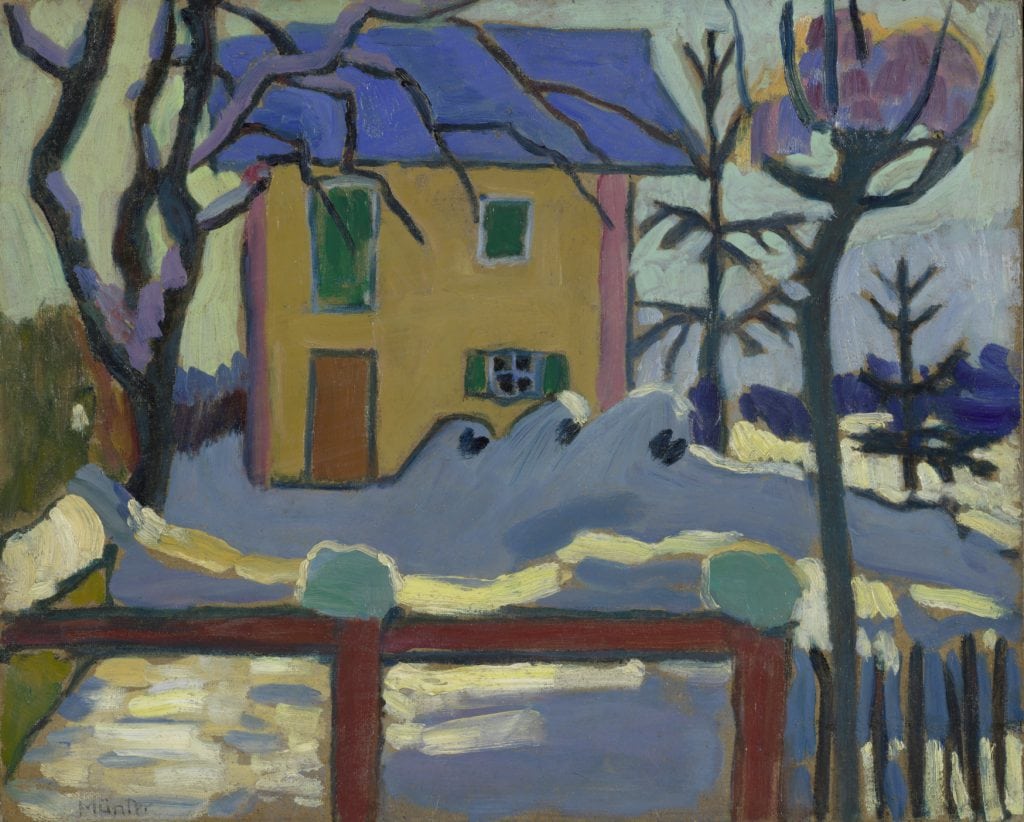
Gabriele Münter, ‘House in the Winter Sun’, ca. 1909
‘In this painting I see the Netherlands. The Netherlands as it should be.
Different colours and stories. Alongside each other, and intermingled. Individually yet together. We, the Dutch, can take this as an example. All of us together next to the windmill. With the wind in our sails if things go well and facing the wind if necessary. But always together”,
ReFramer’ and youth worker Yassin Tallih feels this painting
Edgar Degas, Woman Bathing, c. 1886
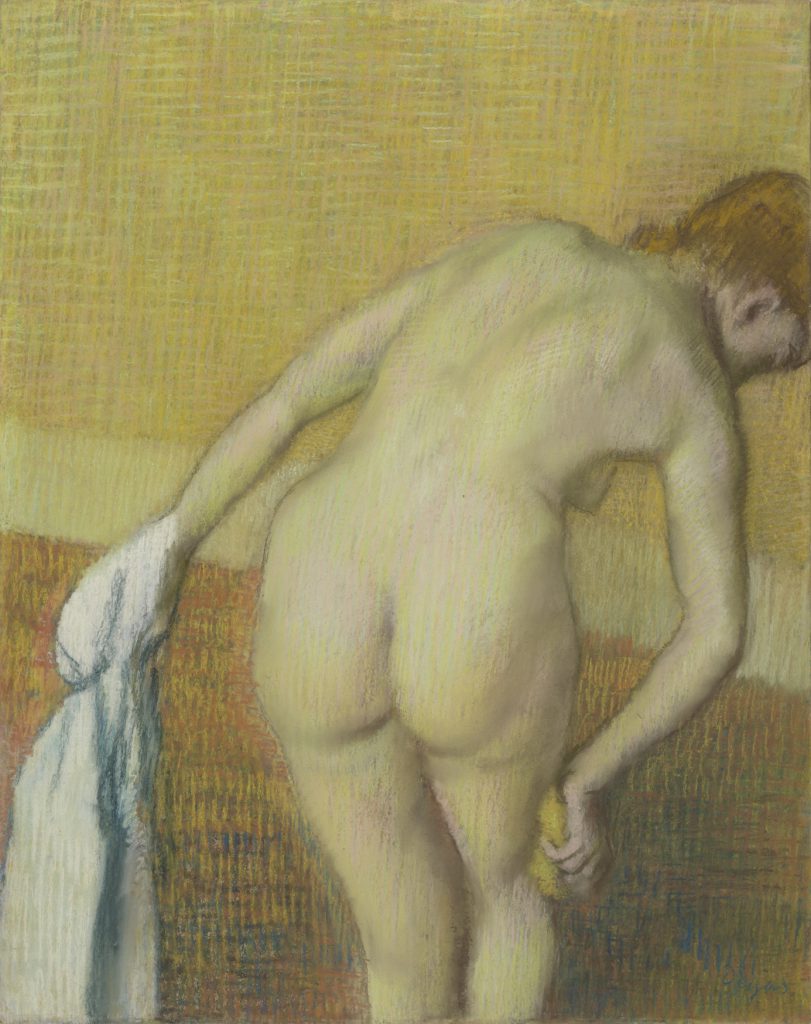
Félix Vallotton, The Solid Reason (La raison probante) from the Edgar Degas, ‘Woman Bathing’, c. 1886
“When Vincent Van Gogh saw a series of nudes by Edgar Degas in Paris, his admiration for the artist was born, so the most important acquisition on paper of the last ten years is without doubt this pastel by Edgar Degas.“,
tells curator Fleur Roos Rosa de Carvalho
Edvard Munch, Portrait of Felix Auerbach, 1906
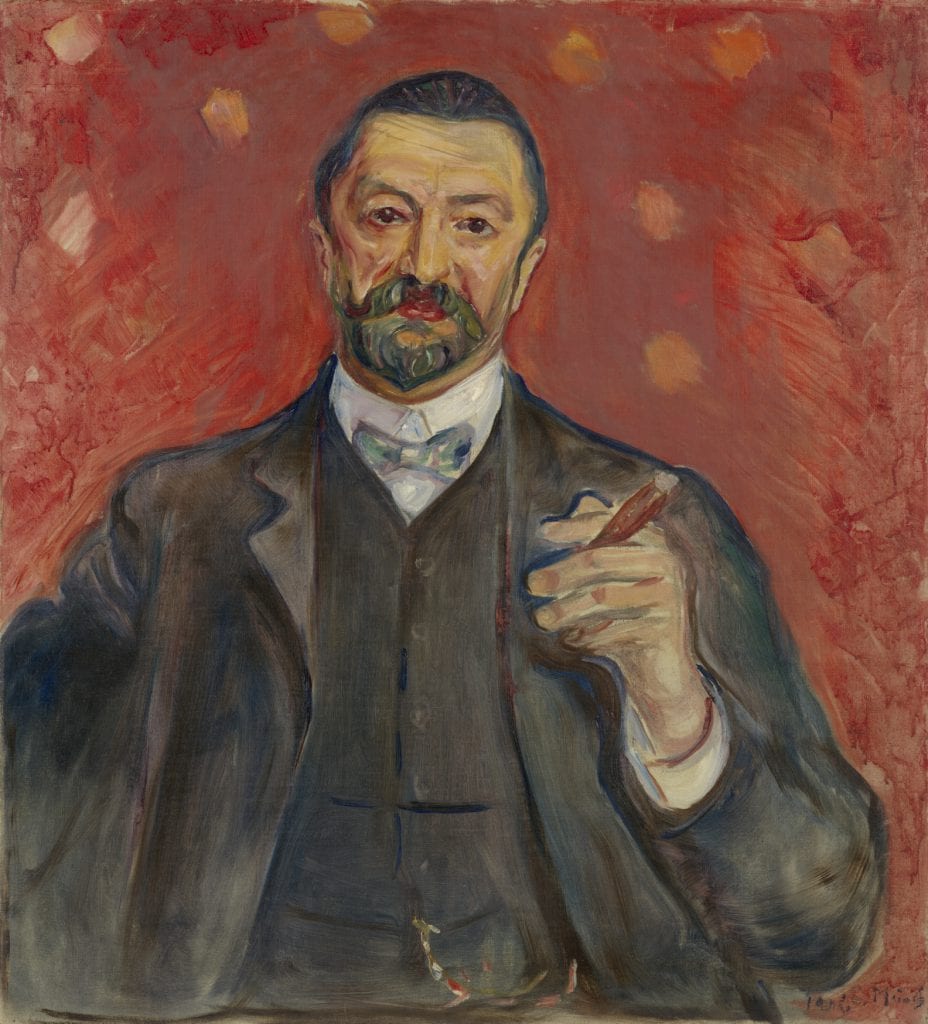
Edvard Munch, ‘Felix Auerbach’, 1906
“A painting often has an entire history before it enters the museum. The life story of this artwork really struck me. It’s a portrait of Felix Auerbach, a Jewish professor, who took his own life along with his wife in 1933 after Hitler came to power. His niece inherited the painting and in 1938 managed to escape, with all her belongings, to New York. After her death her son inherited and sold the work, which came to the Van Gogh Museum through a private owner. Recently, the son visited from Israel to stand eye to eye with Felix Auerbach. His mother had been pregnant with him the last time she saw her Uncle Felix in 1933, so for him this completed the circle”,
says Curator Maite van Dijk
Henri de Toulouse-Lautrec, The Female Clown at the Moulin rouge, 1897
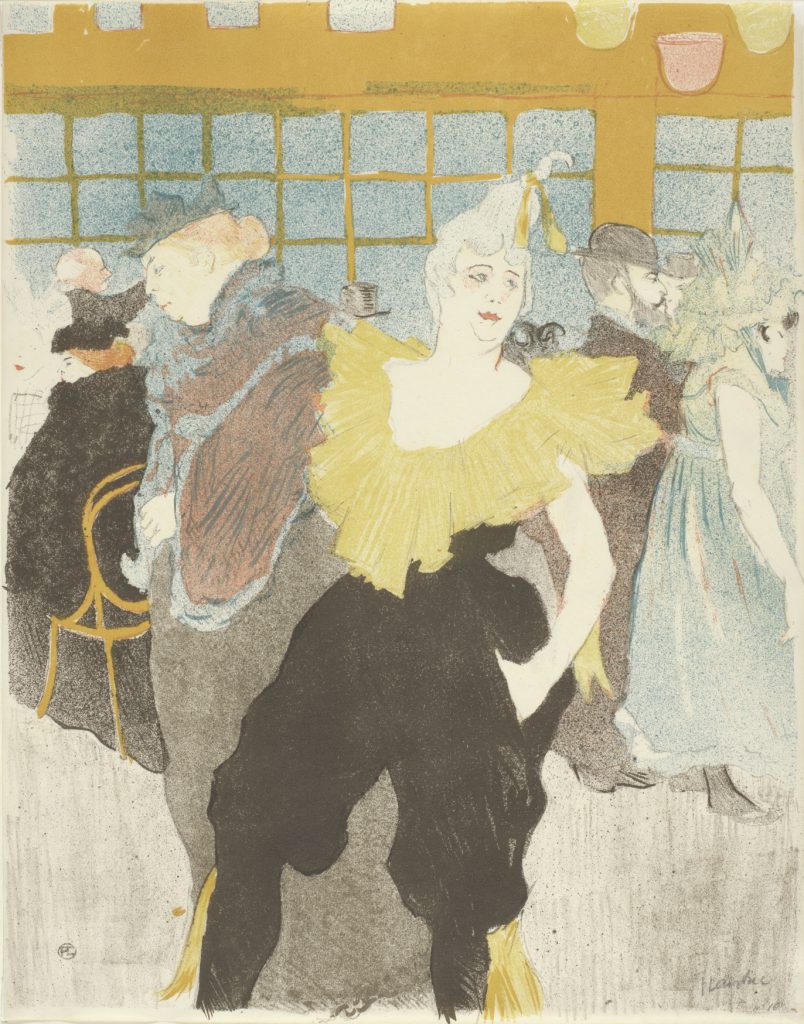
Henri de Toulouse-Lautrec, ‘The Female Clown at the Moulin rouge (La clownesse au Moulin rouge)’, 1897, colour lithography on paper, Van Gogh Museum, Amsterdam
“You can see a scene at the Moulin Rouge here. Lautrec’s favorite place, where he was to be found every evening, or rather every night. He even had his own seat there, and in the foreground, with a very cool pose and outfit, you can see Cha-u-ka-o. A female clown who performed there. And actually everyone you can see is someone Lautrec knew – even when he was drawing an entire crowd, they were all friends and acquaintances”,
says Curator Fleur Roos Rosa de Carvalho
___________________________
“Here to Stay“ can be visited online at the Van Gogh Museums website. The exhibition will be extended until 29 August 2021.
Here to Stay: A decade of remarkable acquisitions and their stories was realised with the assistance of the museum’s main supporters, the Ministry of Education, Culture and Science, the BankGiro Loterij, Van Lanschot and ASML. A vital role in realising acquisitions during the past 10 years: the BankGiro Loterij, the Rembrandt Association, the Mondriaan Fonds, the Prins Bernard Cultuurfonds, the VSBfonds, the Triton Collection Foundation, the Turing Foundation, the members of The Yellow House, Mr and Mrs Cheung Chung Kiu, Mr Christopher Drake, and other supporters who wish to remain anonymous.
___________________________
About the Van Gogh Museum
The Van Gogh Museum is home to the largest collection of artworks by Vincent van Gogh and his contemporaries. The museum collects works by severel other artists to show the art that Van Gogh admired, and what inspired his own work. The museum’s collection also features works by artists including Edgar Degas, Berthe Morisot, Edvard Munch and Henri de Toulouse-Lautrec. The main building of the Van Gogh Museum Amsterdam was designed by Gerrit Rietveld and opened in 1973. Architect Kisho Kurokawa’s exhibition wing was completed in 1999.




